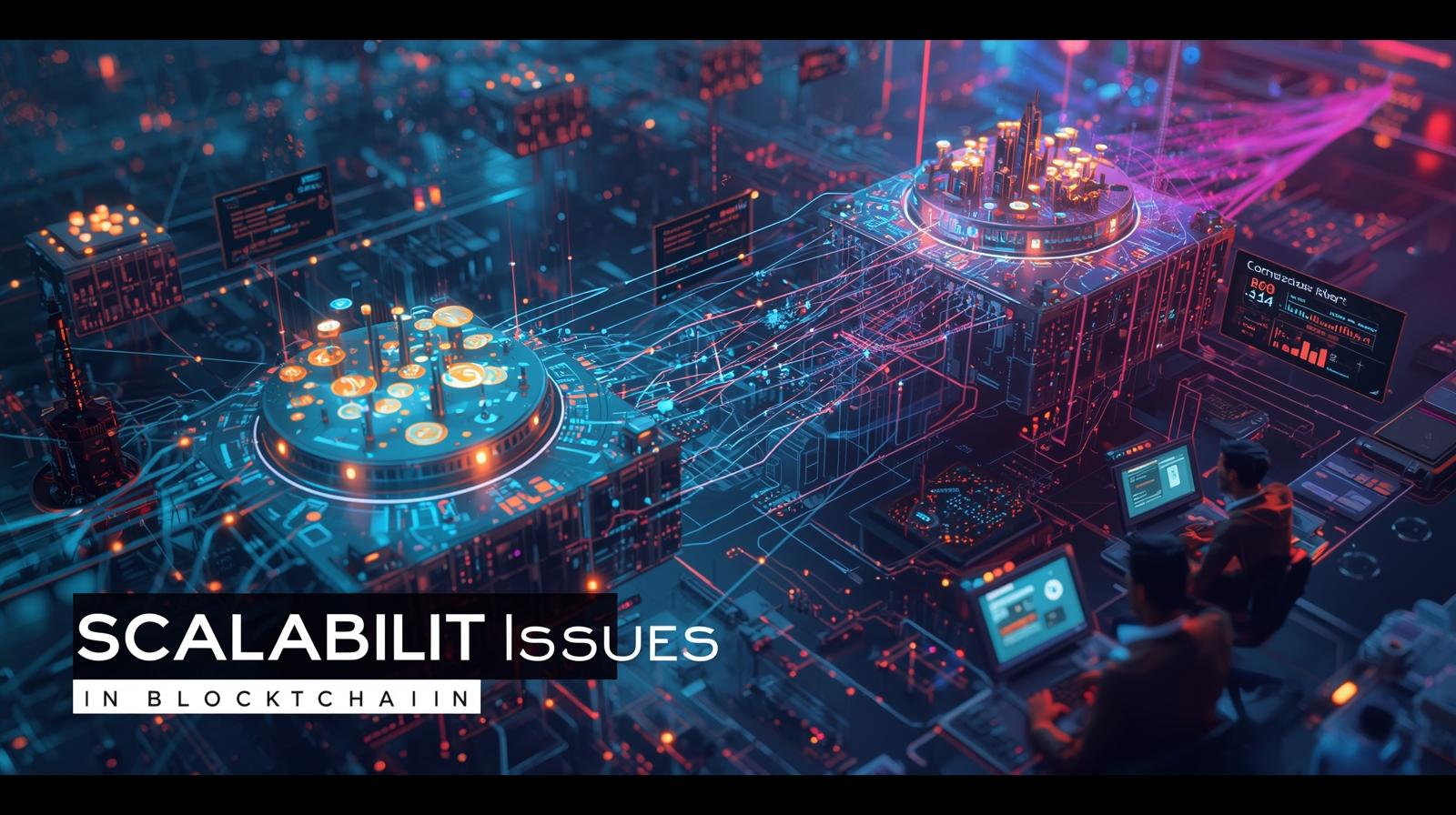Blockchain technology has revolutionized industries by enabling decentralized, secure, and transparent systems. From finance to supply chain management, its applications are growing rapidly. However, one of the most significant challenges that blockchain faces today is scalability. As adoption increases, the network’s ability to handle a large number of transactions efficiently comes under pressure. In this blog, we will explore the key scalability issues in blockchain, their causes, and potential solutions.
What is Blockchain Scalability?
Scalability in blockchain refers to the network’s ability to process a growing number of transactions quickly and efficiently without compromising security or decentralization. A scalable blockchain can handle high transaction volumes, maintain fast confirmation times, and provide a smooth user experience.
Key Scalability Issues in Blockchain
- Limited Transaction Throughput
Most popular blockchains like Bitcoin and Ethereum can process only a limited number of transactions per second (TPS). For example:
- Bitcoin: ~7 TPS
- Ethereum: ~15–30 TPS
In comparison, traditional payment systems like Visa can handle thousands of transactions per second. This limited throughput leads to network congestion during peak times, resulting in higher transaction fees and slower confirmation times.
- High Transaction Costs
As the network gets congested, miners prioritize transactions with higher fees. Users must pay more to ensure their transactions are processed quickly. This makes blockchain less practical for small or micro-transactions.
- Latency Issues
Blockchain networks require consensus mechanisms (like Proof of Work or Proof of Stake) to validate transactions. These mechanisms, while secure, introduce latency. Transactions may take minutes or even hours to confirm during high demand, limiting real-time applications.
- Storage and Data Bloat
Every transaction is recorded on the blockchain permanently. Over time, this leads to data bloat, making the network heavy and slowing down new nodes that want to join the network. Maintaining large blockchains requires significant storage and computing resources.
- Network Decentralization vs. Scalability Trade-off
There is often a trade-off between decentralization, security, and scalability (commonly referred to as the Blockchain Trilemma). Enhancing scalability sometimes compromises decentralization or security, which can affect the integrity of the network.
Solutions to Blockchain Scalability
- Layer 2 Solutions
Layer 2 protocols operate on top of the main blockchain (Layer 1) to improve transaction speed and reduce costs. Examples include:
- Lightning Network (Bitcoin)
- Polygon (Matic) (Ethereum)
These solutions process transactions off-chain and settle them on the main chain, improving efficiency.
- Sharding
Sharding involves splitting the blockchain into smaller, manageable pieces called shards, each capable of processing its own transactions. This increases throughput without compromising security. Ethereum 2.0 is moving toward a sharded architecture.
- Consensus Mechanism Improvements
Replacing energy-intensive Proof of Work (PoW) with faster and more efficient mechanisms like Proof of Stake (PoS) can enhance scalability. PoS reduces transaction confirmation time and energy consumption.
- Blockchain Interoperability
Cross-chain solutions allow multiple blockchains to communicate and share workload. By distributing transactions across chains, overall network congestion is reduced.
- Optimizing Smart Contracts
Efficiently designed smart contracts can reduce computational overhead, lowering transaction costs and improving throughput for decentralized applications (dApps).
Conclusion
Scalability remains a major hurdle for blockchain mass adoption. As businesses and users demand faster, cheaper, and more efficient transactions, solving these scalability issues is critical. Innovations like Layer 2 solutions, sharding, and upgraded consensus mechanisms are paving the way for a scalable blockchain future.
By addressing these challenges, blockchain can reach its full potential, enabling seamless, decentralized applications across industries



